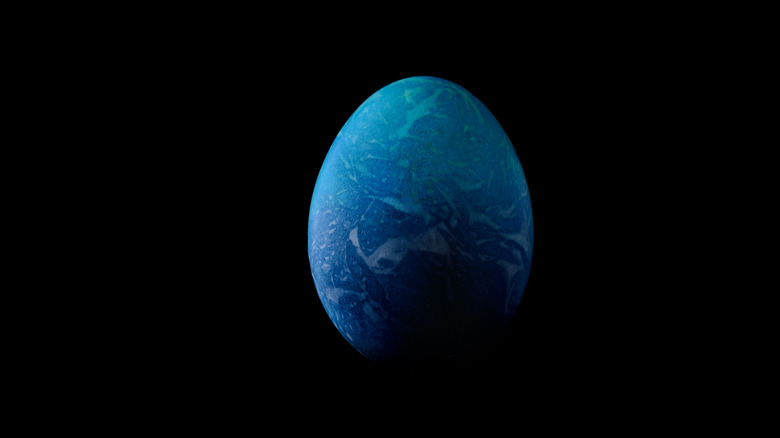A Potato-Shaped Planet Has Been Discovered. Here's What It Means
Recently, astronomers made a remarkable realization when they identified WASP-103b — a known exoplanet approximately 1,500 light-years away — as having a "potato-like shape" (via News18). Generally, gravity tends to favor shaping large objects into spheres. According to The European Space Agency (ESA), the gravitational force of such objects eventually leaves all points on the surface at a relatively equal distance from the center, resulting in a sphere.
However, this is not always the case, as celestial bodies can be warped by the gravitational pull of others (i.e., the moon's tidal effects on Earth). While deformation can be present, it is usually imperceptible and doesn't typically result in a drastic change in shape, as is the case with WASP-103b. One of the few other large bodies known to be clearly non-spherical is the oval-shaped dwarf planet Haumea, and that isn't even the result of tidal forces, but instead the centrifugal force of its rapid rotation (via Space).
WASP-103b's oval shape
WASP-103b is larger than Jupiter. The source of its bizarre shape is tidal stress caused by close proximity to its star WASP-103, a distance estimated to only be around 20,000 miles, according to DailyO. By comparison, the distance between our less massive sun and Earth is about 93 million miles. Unlike most planets this close though, WASP-103b might be moving away from its star, adding to its mystery (via Inverse). Future studies will hopefully inform astronomers on the behaviors, composition, and evolution of it and other "Hot Jupiters" — large planets with a very short orbit/close proximity to their stars.
The exact degree of warping will help scientists understand how much of this planet is made of gas, rock, and liquid, as these will react differently to such stresses, per The Gazette. The find also means that methods of analyzing exoplanets are improving, as this revelation is largely based on previous observations dating back to the planet's discovery in 2014. While at the time it was assumed that WASP-103b experienced extreme tidal forces, the extent of its effects was only recently deduced through the comparison of data from several space telescopes.

